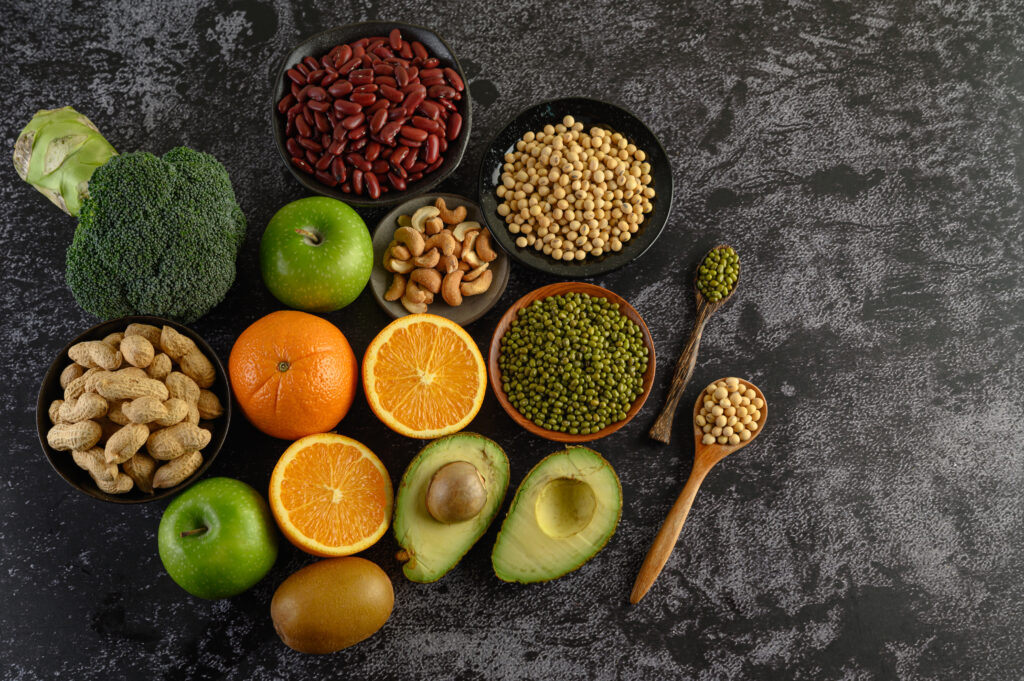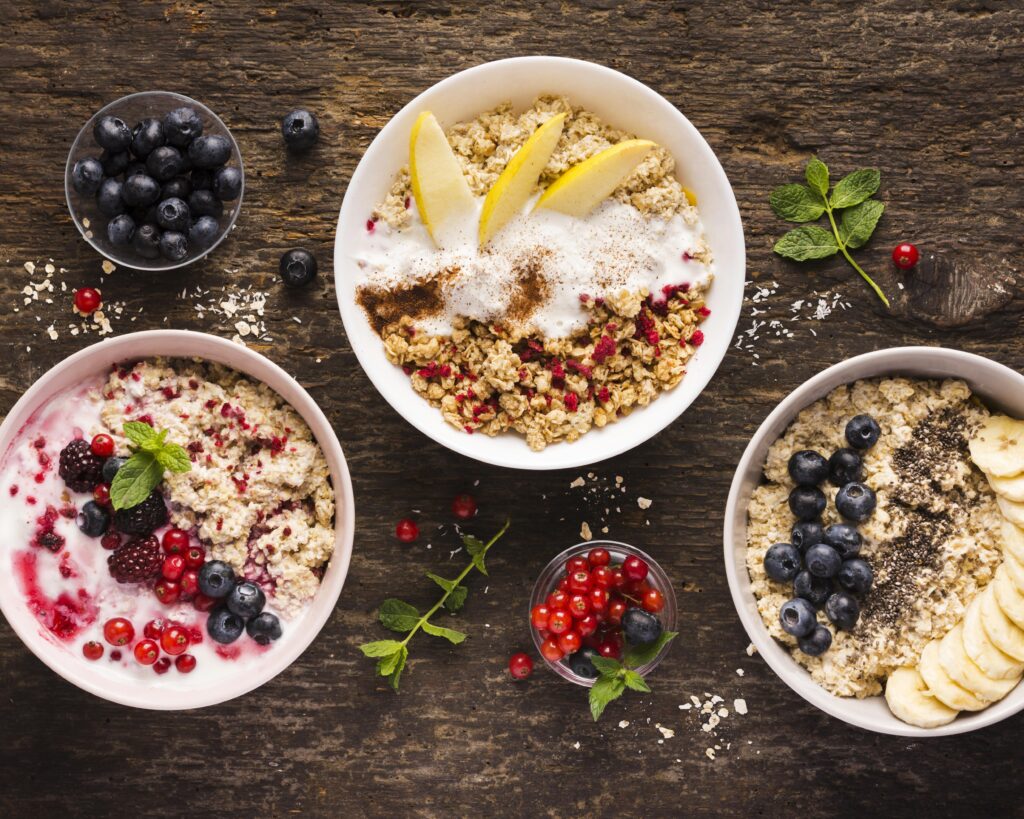
Are you ready to unlock the mysteries of high fiber foods and transform your health? Welcome on this exciting journey, where we’ll uncover what makes fiber essential and how you can easily integrate it into your diet. In this guide, you’ll learn why dietary fiber is crucial, the difference between soluble and insoluble fiber, and how fiber contributes to weight management, heart health, and more. Here’s a sneak peek at what we’re diving into:
- Fiber 101: Why Your Body Needs It
- Tasty Fiber-Rich Foods: Making Healthy Choices Easy
- Benefits of Fiber: Keeping Your Body in Top Shape
- Soluble vs. Insoluble Fiber: Simple Breakdown
- Quick High Fiber Snacks: Fueling Your Day Right
- Easy Ways to Add Fiber to Every Meal: Practical Tips and Recipes
Fiber 101: Why Your Body Needs It
Fiber is much more than just roughage; it’s a powerhouse for your overall health. Dietary fiber benefits your digestive health by keeping things moving smoothly through your intestines, which is great news for those suffering from constipation. Fiber also helps in maintaining a healthy weight, controlling blood sugar levels, and lowering cholesterol. It’s no wonder that experts recommend aiming for a recommended daily fiber intake depending on age and gender.
Tasty Fiber-Rich Foods: Making Healthy Choices Easy
Incorporating high fiber foods into your diet isn’t as hard as it sounds. Start your day with a bowl of oatmeal topped with fresh fruits like berries or sliced apples. Whole grains like quinoa and brown rice are not only delicious but also packed with fiber. Don’t forget about legumes—chickpeas, lentils, and black beans are superb ways to boost your fiber intake. And let’s not overlook delicious high-fiber snacks like air-popped popcorn or a handful of nuts.
Benefits of Fiber: Keeping Your Body in Top Shape
The benefits of fiber go beyond just digestive health. A fiber-rich diet is crucial for maintaining both heart health and gut health. Studies show that foods rich in soluble fiber can help lower bad cholesterol levels, thereby reducing your risk of heart disease. Fiber also plays a critical role in maintaining a robust gut microbiome, the community of bacteria that lives in your intestines. This, in turn, can help improve your immune system and keep inflammation at bay.
Soluble vs. Insoluble Fiber: Simple Breakdown
Understanding the types of fiber can make it easier to ensure you’re getting enough of both. Soluble fiber dissolves in water to form a gel-like substance, which can help lower blood sugar levels and cholesterol. Foods high in soluble fiber include oats, legumes, and some fruits like apples and pears. On the other hand, insoluble fiber does not dissolve in water and is key for helping food pass through the digestive system. You can find insoluble fiber in whole grains, nuts, and many vegetables.
“Life is too short to live without fiber. Fuel your body right!”
Stay tuned for the next part of this ultimate guide where we’ll explore quick high-fiber snacks and practical tips for adding fiber to every meal. More delicious options are on their way to fuel your day right!
Quick High Fiber Snacks: Fueling Your Day Right
Snacking can be both delicious and beneficial when you choose high-fiber options. Imagine munching on crunchy carrot sticks with a side of hummus while working. Or how about grabbing a fiber-packed granola bar as you dash out the door? For those who have a sweet tooth, fruits and vegetables high in fiber like raspberries, pears, and avocado can be turned into delightful smoothies or parfaits. These quick snacks not only satisfy your hunger but also keep you full longer, aiding in weight management.

Easy Ways to Add Fiber to Every Meal: Practical Tips and Recipes
Adding fiber to your meals doesn’t have to be complicated. Start by swapping out white rice for brown rice or quinoa at lunch and dinner. Toss a handful of flaxseeds or chia seeds into your morning smoothie for an extra fiber boost. For a fiber-rich breakfast, try overnight oats mixed with fruits, nuts, and a dash of honey. Even simple changes like choosing whole grain bread over white bread can have a significant impact on your fiber intake. Here’s a quick recipe for a high-fiber meal: stir-fry some veggies like broccoli and carrots with chickpeas, then serve over a bed of quinoa. Delicious and nutritious!
Fiber for Weight Loss: Feeling Full Without Sacrifice
One of the most significant benefits of a fiber-rich diet is its role in weight management. Fiber adds bulk to your meals without adding extra calories, which helps you feel full and satisfied. This feeling of fullness, also known as fiber and satiety, can reduce overall calorie intake, making it easier to maintain or achieve a healthy weight. Soluble fiber, in particular, forms a gel-like substance in the stomach that slows down the digestive process, keeping you feeling fuller for longer. No more mid-morning or afternoon munchies!
“Feeding your body fiber is a form of self-love.”
In the next section, we’ll discuss even more about the benefits of high fiber diets and how to make the most out of every bite. Whether it’s for heart health, blood sugar control, or simply staying regular, fiber has got you covered! Dive in further as we unravel more exciting aspects of this dietary wonder.
Understanding and incorporating high fiber foods into your daily diet can be a transformative approach to achieving better health. From improving digestive health and weight management to enhancing heart and gut health, the benefits of fiber are truly far-reaching. By integrating tasty fiber-rich foods and simple recipes into your meals, you’ll find it easier than ever to meet your daily fiber intake recommendations. Remember, whether you’re munching on a quick high-fiber snack or enjoying a fiber-packed dinner, every bite is a step towards a healthier, happier you. So why wait? Start your fiber journey today and let it be your guide to better health!